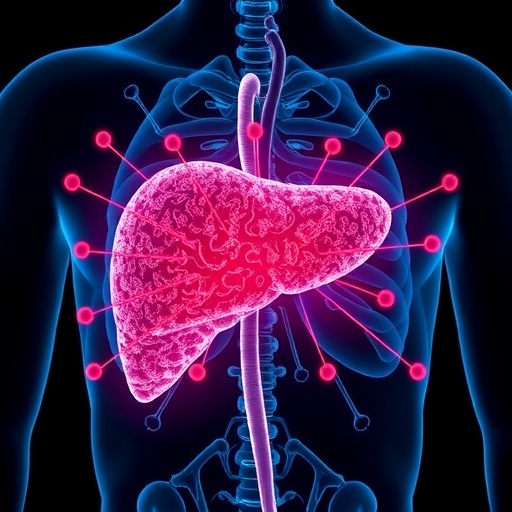
In a groundbreaking advance at the intersection of artificial intelligence and transplant medicine, researchers have unveiled GraftIQ, a novel hybrid multi-class neural network designed to revolutionize outcome prediction in liver transplant recipients. This pioneering model integrates sophisticated machine learning techniques with deep clinical insights, setting a new standard for personalized prognostics in one of the most complex fields of modern healthcare. The ability to accurately forecast multiple clinical outcomes simultaneously holds immense promise for improving patient care, optimizing donor-recipient matching, and reducing post-transplant complications.
The liver transplant landscape has long been challenged by the unpredictable nature of graft function and recipient survival, factors influenced by myriad intertwined variables such as immunological status, perioperative management, and post-transplant care. Traditional risk assessment models have primarily focused on singular outcomes, often failing to capture the nuanced interplay of diverse clinical parameters that dictate patient trajectories. GraftIQ’s innovative architecture addresses this shortcoming by employing a multi-class framework capable of predicting a diverse array of outcomes in a unified, clinically interpretable model.
At its core, the GraftIQ neural network embodies a hybrid methodology, combining data-driven deep learning techniques with expert clinical knowledge. This synergistic approach enables the model to harness vast quantities of heterogeneous data—ranging from demographic and biochemical markers to histopathological and imaging findings—while embedding human-derived clinical heuristics that guide and constrain the learning process. Such integration ensures that the predictions are not only accurate but also aligned with established medical understanding, enhancing trust and usability among clinicians.
.adsslot_s6qQMBGnL5{width:728px !important;height:90px !important;}
@media(max-width:1199px){ .adsslot_s6qQMBGnL5{width:468px !important;height:60px !important;}
}
@media(max-width:767px){ .adsslot_s6qQMBGnL5{width:320px !important;height:50px !important;}
}
ADVERTISEMENT
The model’s multi-class capability is particularly novel. Unlike binary classifiers that predict a single categorical outcome (e.g., graft failure or survival), GraftIQ is trained to simultaneously predict numerous clinical endpoints such as acute rejection episodes, chronic graft dysfunction, infection risks, and overall patient survival. This holistic approach better reflects real-world complexity, where patients frequently face intertwined risks that evolve dynamically over time. By anticipating multiple possible events, clinicians can tailor interventions with unprecedented precision.
A pivotal technical challenge overcome by the researchers was managing the heterogeneity and imbalance prevalent in transplant datasets. Liver transplant data inherently include both abundant routine clinical parameters and sparse rare-event outcomes, such as early graft loss. GraftIQ employs advanced data augmentation and regularization techniques to mitigate overfitting and bias, ensuring robust performance across patient cohorts. Moreover, the model architecture incorporates attention mechanisms that highlight critical features contributing to predictions, improving transparency.
Crucially, GraftIQ incorporates temporal data streams, enabling dynamic risk stratification throughout the post-operative course. By modeling time-dependent variables, such as evolving liver function tests and immunosuppressive drug levels, the network adapts predictions in real time, reflecting the patient’s changing physiological state. This temporal dimension dramatically enhances the relevance of prognostications, supporting timely clinical decisions.
The validation of GraftIQ’s predictive prowess was performed on an extensive multi-center dataset comprising thousands of liver transplant recipients, encompassing diverse ethnicities and clinical backgrounds. Across this heterogeneous population, the model consistently outperformed existing benchmarks, exhibiting superior sensitivity and specificity for multiple outcomes simultaneously. These compelling results underscore the model’s generalizability and readiness for clinical integration.
Beyond prediction accuracy, the study emphasizes interpretability—a key factor limiting AI adoption in medicine. The hybrid design embeds explainability modules, allowing surgeons and hepatologists to visualize the contribution of individual features to each prediction. For example, insights into how donor age or ischemia time influence acute rejection risk can guide preemptive strategies or tailored immunosuppression regimens, fostering clinician confidence.
The implications of GraftIQ for personalized medicine are profound. Transplant physicians can now forecast complex risk profiles pre- and post-operatively, enabling bespoke therapeutic plans that minimize complications and optimize graft longevity. Early identification of high-risk patients paves the way for intensified monitoring or experimental interventions, potentially improving survival outcomes and quality of life.
Moreover, the technology holds potential to transform organ allocation policies by providing objective, multifaceted risk assessments that balance donor-recipient matching with anticipated clinical trajectories. This data-driven organ allocation could improve equity and efficiency in transplantation systems, addressing chronic shortages and maximizing donor organ utility.
While the study showcases an impressive leap forward, the authors acknowledge that prospective clinical trials are essential to evaluate GraftIQ’s impact on decision-making workflows and patient outcomes. Integration with electronic health record systems and real-world usability assessments will also be critical to transition from research prototype to standard-of-care tool.
Ethical considerations surrounding the deployment of AI in high-stakes clinical scenarios are thoughtfully addressed. The hybrid approach’s inherent transparency and incorporation of clinical domain knowledge aim to mitigate risk of automated errors and bias, promoting responsible use. Nonetheless, continuous oversight and clinician engagement remain paramount to safeguard against unintended consequences.
Looking ahead, the research team envisions expanding the GraftIQ framework to other solid organ transplants and complex medical conditions characterized by multimodal data and multifactorial outcomes. By scaling this paradigm, AI may catalyze a new epoch of precision prognostics across medicine.
In summary, GraftIQ represents a landmark integration of hybrid neural networks with clinical expertise, enabling robust multi-outcome prediction in liver transplantation. This advance heralds a shift towards fully personalized transplant care, with AI-augmented insights enabling clinicians to navigate the intricacies of graft and patient survival like never before. If its promise translates into routine practice, GraftIQ could significantly improve longevity and quality of life for thousands of liver transplant recipients worldwide.
As the medical community increasingly embraces artificial intelligence, models like GraftIQ exemplify the transformative power of marrying computational sophistication with human clinical wisdom. The future of transplant medicine appears poised to harness this synergy, rendering once elusive predictive insights a tangible reality. Through sustained innovation and thoughtful implementation, AI-driven tools may soon become indispensable allies in saving lives and optimizing scarce medical resources.
The year 2025 may well mark the dawn of a new era where hybrid neural networks such as GraftIQ fundamentally reshape how outcomes are predicted and managed in liver transplantation, propelling the field toward a future of unparalleled precision and patient-centered care.
Subject of Research: Multi-outcome prediction model for liver transplant recipients using hybrid neural networks integrating clinical insights
Article Title: GraftIQ: Hybrid multi-class neural network integrating clinical insight for multi-outcome prediction in liver transplant recipients
Article References:
Sharma, D., Gotlieb, N., Chahal, D. et al. GraftIQ: Hybrid multi-class neural network integrating clinical insight for multi-outcome prediction in liver transplant recipients. Nat Commun 16, 4943 (2025). https://doi.org/10.1038/s41467-025-59610-8
Image Credits: AI Generated
Tags: advanced risk assessment modelsartificial intelligence in medical predictionsclinical insights in transplant medicineGraftIQ liver transplant predictionhybrid AI in healthcareimproving donor-recipient matchingmachine learning for organ transplantationmulti-class neural network applicationsoptimizing liver transplant carepersonalized prognostics in medicinepredicting post-transplant outcomesreducing complications in liver transplants





